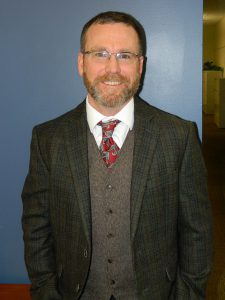 There’s a New Doctor in the House
There’s a New Doctor in the House
March 2, 2017
BRT would like to congratulate Dan Farley on successfully defending his dissertation and earning his Ph.D. on March 2, 2017. Dr. Farley has worked closely with BRT since 2011, when he was hired to manage our work related to the Oregon Extended Assessment for the Oregon Department of Education.
Dr. Farley’s dissertation aligns closely with his previously published articles, among them a 2016 manuscript published in Exceptional Children and another 2016 article in Journal of Special Education, both of which examine the relationship between assessments and students with significant disabilities.
In his dissertation, Dr. Farley addressed a need identified by statewide accountability programs for modeling growth for students with significant cognitive disabilities (SWSCD) who take alternate assessments based on alternate achievement standards (AA-AAS), an approach that has been widely adopted for use with students taking general assessments. He used latent growth curve modeling to define growth estimates based on exceptionality, sex, race, and economic disadvantage, and then unconditional latent class growth analysis (LCGA) to determine the number of homogeneous subgroups that existed within the heterogeneous population of SWSCD for subsequent growth mixture modeling (GMM). Dr. Farley used unconditional GMM to define the number of homogeneous subgroups of students with similar intercept and growth patterns within the overall population of SWSCD, and then discriminant function analysis (DFA) including student exceptionality, sex, race, and economic disadvantage status to analyze class membership post hoc.
In his work, Dr. Farley notes that researchers have elaborated a number of challenges in modeling growth for students taking an AA-AAS, including test scaling, group heterogeneity, small sample sizes, missing data, and the use of status-based assessments that were not designed to measure a developmental continuum. His study addressed these challenges, but did not fully eliminate or solve them.
Dr. Farley found that SWSCD with different exceptionalities generally had significantly different average initial achievement but growth rates that did not differ significantly from each other. SWSCD classified as economically disadvantaged performed significantly lower than their peers in initial achievement, yet exhibited growth rates that were not statistically different than the reference group. In his study, he also found evidence for two separate latent classes of students with exceptionalities on the Oregon AA-AAS. The first class had lower achievement and larger growth rates, while the second class had higher achievement and slower growth rates. Students identified as SLD and CD were generally higher-performing, while students identified as ID, ASD, and OI were lower performing across all analytic models.
Dr. Farley will continue his work on the Oregon Extended Assessment as well as taking on additional project responsibilities within Behavioral Research and Teaching.
